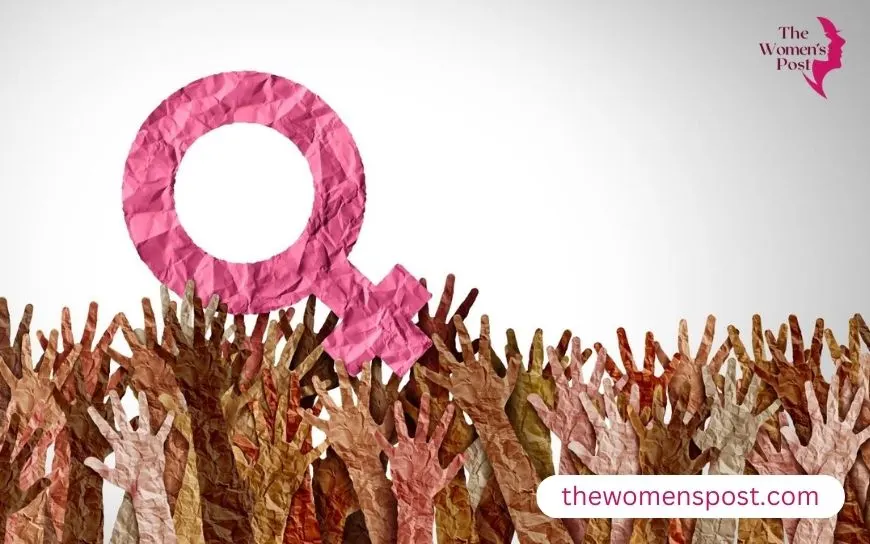Women in Tech: Challenges and Tips to Overcome Them

According to a recent report by Girls Who Code, only 24% of computing jobs are held by women. This is despite the fact that women make up 47% of the overall workforce in the United States. This gender gap in technology is not only a missed opportunity for women but also a loss for the industry. This is because diverse teams have been shown to outperform homogeneous ones. Women in tech face a range of challenges, including gender bias, stereotyping, lack of representation, and unequal pay.
This article, published on TheWomensPost, will explore these challenges in detail and provide strategies for how female tech professionals can overcome them. It is essential that we work together to create a more equitable and diverse industry, not only for women but for all underrepresented groups. Promoting gender diversity in tech isn’t just an ethical decision—it drives performance and innovation across companies.
Why the World Should Care about Women in Tech and Their Challenges – the Rational Explanation

Also Read: Brittany Wenger: Scientist Saving Lives and Tech Entrepreneur
It is undeniable that the tech industry is a male-dominated field. And few might argue – “Let it be the way it is. The code doesn’t care who wrote it, the project doesn’t care who led it, and decisions don’t care who took them. So why do we need more women in tech?”
Here are the top 5 reasons why we should care about women in tech:
Diversity Wins: How Inclusion Matters, a study by McKinsey & Company found that companies in the top quartile for gender diversity in tech on their executive teams were 25% more likely to experience above-average profitability than companies in the bottom quartile.
A report by AnitaB.org, a non-profit organization focused on advancing women in technology, found that companies with more female tech professionals in technical roles had higher levels of innovation. The report also states that companies with a more balanced gender ratio in technical roles have improved operational and financial performance, better problem-solving, and enhanced company reputation.
Women in STEM bring unique perspectives, experiences, and skills to the table, which can help technology companies better understand and meet the needs of their diverse customers. Additionally, women have been shown to excel in skills such as communication, collaboration, and empathy, which are essential for successful team dynamics and effective leadership in the tech industry.
Lack of gender diversity in tech can perpetuate harmful stereotypes and biases within the industry and in the products and services that tech companies produce. By increasing the representation of women in tech, we can help to combat these stereotypes and biases and create more inclusive and equitable products and services.
Addressing the gender gap in tech can help promote gender equality and empower women in STEM and other fields. For example, female tech professionals can serve as role models and mentors for other women who are interested in pursuing careers in traditionally male-dominated fields.
Overall, increasing the representation of women in software engineering and tech leadership can lead to more innovation, better decision-making, profit, and more tremendous success for technology companies.
Challenges Faced by Women in Tech
1. Pay Disparity in the Tech Industry

Also Read: Rana Hajirasouli: Redefining Waste Management with Sustainable Solutions
The biggest myth that people live by is that there is no pay disparity in tech based on gender. And the saddest part is that people justify this pay disparity with logic. Some arguments say: Roles, working hours, skills-set, experience, or efficiency might differ and as a consequence women might get paid less than men. However, enough research and studies show it’s not uncommon for female tech professionals to experience pay disparities compared to their male counterparts.
According to a study by Hired, a marketplace for tech talent, women in software engineering earn 3% less than men on average. Additionally, women who apply for tech jobs are offered lower salaries than men 63% of the time. According to the Bureau of Labor Statistics, women’s annual earnings were 82.3% of men’s earnings in 2020. The salary gap is even wider for women of color. Moreover, 78% of large companies admitted to having a male-female pay gap in tech.
These statistics clearly show that the pay disparity in the tech industry is a significant issue, and it’s crucial to take steps to address it. And sometimes this equal pay is not even conscious but stems from subconscious beliefs that men perform better in tech roles.
Companies must examine their pay structures and make changes to ensure that all employees, regardless of gender, are paid fairly. Also, employees have to raise their voices and show their concern if they find out they are getting paid less solely based on their gender.
2. Being the Only Woman in the Room
One of the biggest challenges for women in tech is being the only woman in their workplace or on their team. Some people may not even consider it an issue. Or a question may pop up: How is being the only woman in the room challenging?
Feeling Isolated: This can lead to feelings of isolation and a sense of not belonging, which can be incredibly demotivating.
The constant need to prove competence: When female tech professionals are the only ones in a room of predominantly male colleagues, it can be challenging to feel like they belong.
Emotional labor: Women in STEM may be expected to take on more emotional labor than their male colleagues, such as managing team dynamics and resolving conflicts.
Women’s mental well-being can be adversely affected by these challenges. Therefore, it is crucial to inspire and support young girls in pursuing their interests in technology by providing them with the necessary resources and opportunities.
Also Read: Debbie Weinstein: The Strategic Force Behind Google’s Ad Evolution
3. Fighting Stereotypes
Women in software engineering often face gender stereotypes and biases that can make it difficult for them to advance in their careers. These include being seen as less technical or more emotional, or not fit for leadership roles.
Nikita Gupta, a co-founder of Careerflow, has shared her personal story of facing persistent questioning about her career choices. Such conversations often reinforce societal bias that discourages women in STEM from technical careers.
Also, these unconscious biases can impact hiring practices, promotion opportunities, and workplace culture. To fight these stereotypes, it’s important to address unconscious bias and create a culture of inclusivity in the workplace.
4. Lack of Representation
Women in tech hold only 26.7% of tech-related jobs, about 25% of leadership positions in tech, and just 14% of women in software engineering roles.
Highlighting women like Ada Lovelace, Grace Hopper, Sheryl Sandberg, Ginni Rometty, and Mira Murati shows how women shaped the modern art movement of innovation in tech. These pioneering leaders reflect the contributions of women to visual arts and technology alike—fostering a broader conversation on inclusion across all industries.
5. Often Taken for Granted
Microaggressions remain a daily reality for female tech professionals—from being talked over in meetings to not being taken seriously by company leadership. This often leads to isolation, imposter syndrome, and mental fatigue.
How to Overcome These Challenges

Also Read: The Soft Power Shift: How Women Are Redefining Influence Online?
Develop a Support System
By joining support groups like Girls Who Code, AnitaB.org, or TheWomensPost network, women in tech can find communities that share their struggles and success stories.
Negotiate Your Salary and Benefits
Understanding market rates, documenting achievements, and confidently negotiating pay can help women in software engineering close the wage gap.
Join Professional Groups and Communities
Programs like Women Who Code and Tech Ladies not only promote gender diversity in tech but also empower women through visibility and support.
Advocate for Yourself
Speak up, find allies, and educate others. Change starts from within—but it scales with community.
Conclusion
Still, in 2023, women in tech face systemic challenges. But with ongoing efforts to improve gender diversity in tech, the future looks brighter. Initiatives to celebrate art movements led by women, amplify the challenges faced by female artists, and honor the contributions of women to visual arts can inspire similar shifts in tech—drawing parallels between industries where women are reclaiming space and rewriting the narrative.
By building inclusive environments and breaking stereotypes, TheWomensPost aims to make tech not just accessible—but empowering for every woman.
across companies.









